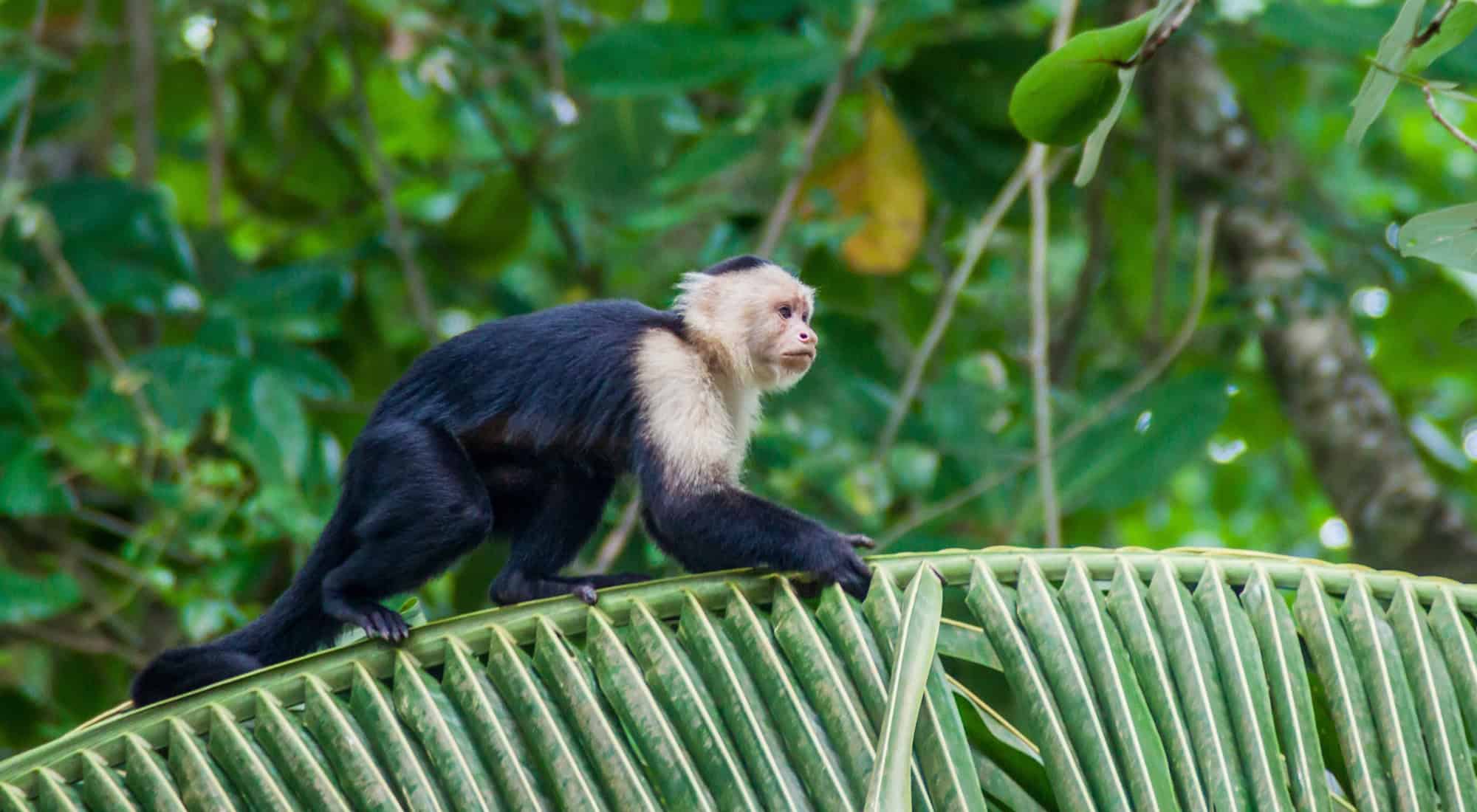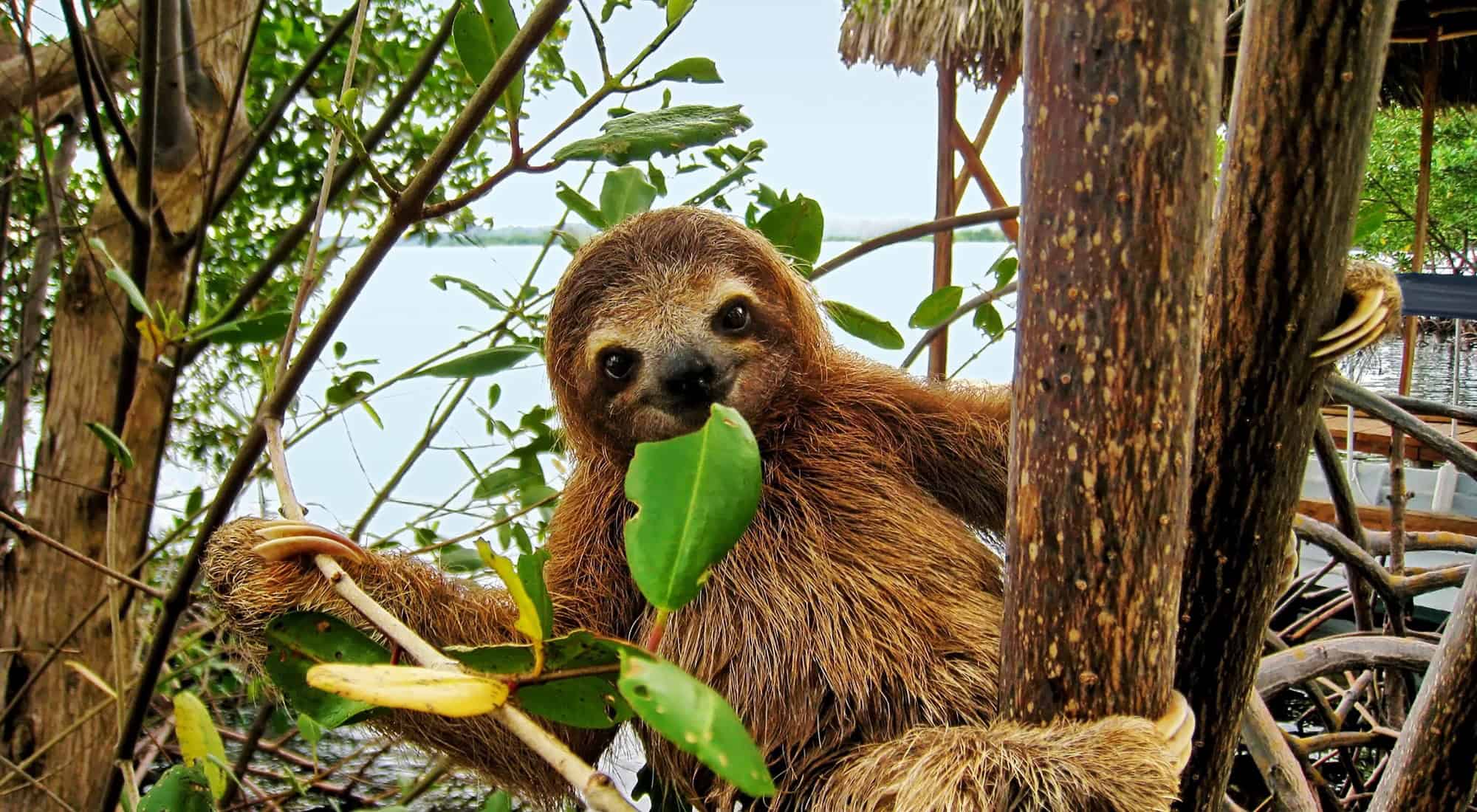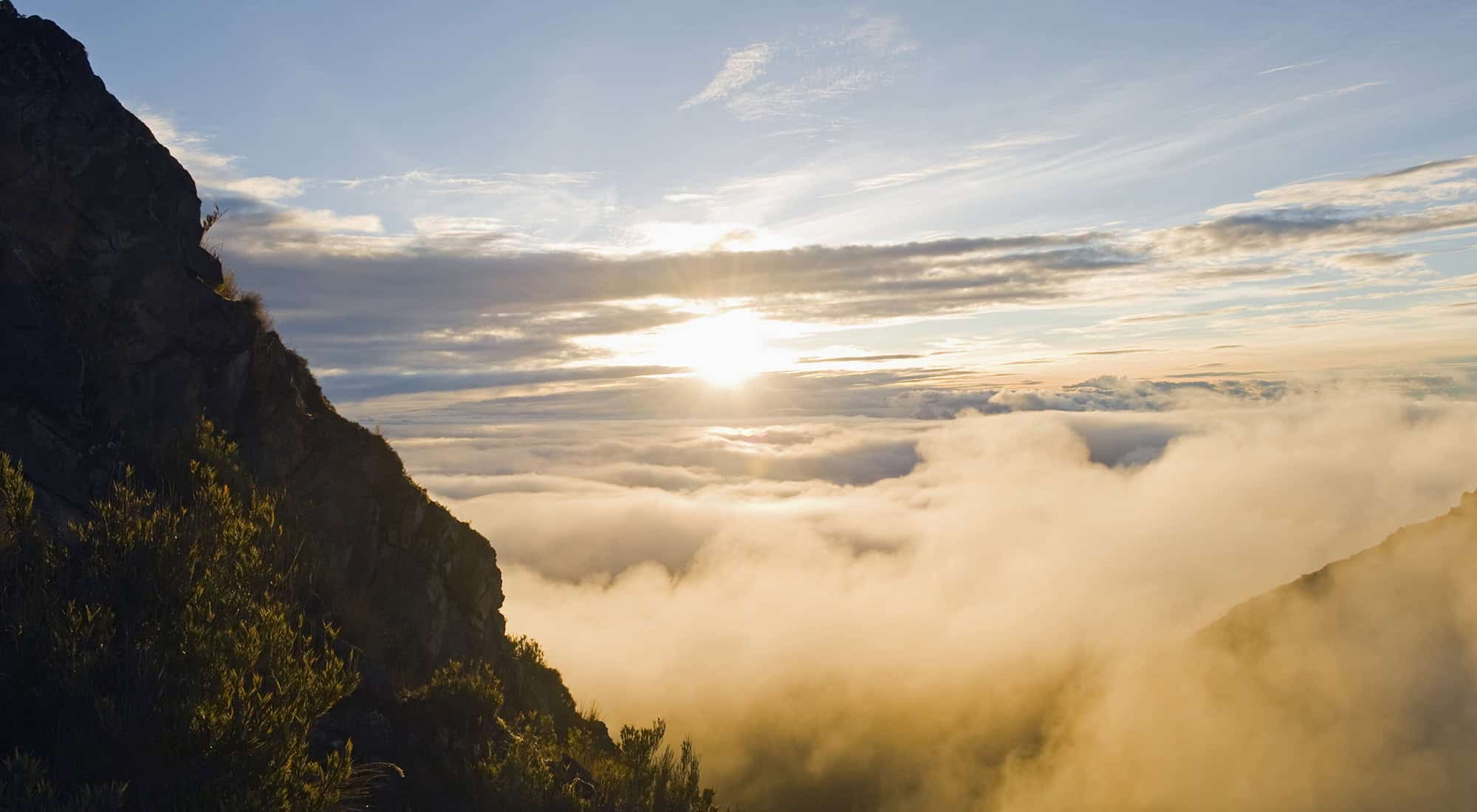In Central America mammals tend to be secretive, indeed the majority are nocturnal; hence the need for night walks if you are serious about finding them, though, even then, good views are comparatively rare. That said, you will certainly see some delightful creatures, with views of primates being more or less guaranteed. The rainforests throughout the region contain spider monkeys, howler monkeys and/or capuchin monkeys. The howlers are probably the most noticeable because, as their name suggests, they are inclined to make a huge row at times, especially early in the mornings and in the late afternoons. You’ve a good chance of seeing black howler monkeys in the rainforests of Costa Rica. The spider monkey is a much more agile, slender primate, swinging around high in the canopy, using its prehensile tail as a fifth limb. The smaller, white-throated capuchins are also commonly seen, moving around quite noisily in groups, searching for fruit and insects in the trees and even coming down to the ground to find food. Smaller again is the red-backed squirrel monkey. The most likely places to see them are Corcovado and Manuel Antonio national parks.

Another mammal you are very likely to see are sloths. Good places to look are Reserva Monteverde and the forests of Tortuguero and Manuel Antonio. As they tend to stay in one area for days at a time, local guides are excellent at pointing them out.

The most easily seen of the carnivores is not, sadly, the longed-for jaguar, but the ubiquitous white-nosed coati, a member of the racoon family. The females and their offspring go around in groups and are unmistakable with their long, ringed tails, frequently held in the air, and their long snouts sniffing around for insects and fruit in trees and on the ground. At many tourist sites, they hang around waiting to be fed by the visitors, particularly in the popular lowland national parks.
Members of the cat family are rarely seen; those in the area include the jaguar, puma, ocelot and margay. All are more likely to be seen at night, or, possibly, at dawn and dusk. Tortuguero national park is a possibility for the jaguar and the other small cats.
The largest land mammal in Central America is Baird’s tapir, weighing up to 300 kg. It is a forest species and very secretive, particularly so in areas where it is hunted. Corcovado and Santa Rosa national parks are all places it might be seen. There is at least a reasonable chance of seeing its hoofprints. It might be seen at waterholes or be spotted swimming in rivers. More likely to be seen are peccaries, especially the collared peccary, medium sized pig-like animals that are active both day and night. The collared peccary can be found in both dry and rainforests throughout the region, while the white-lipped peccary is more common in wetter, evergreen forests. Both live in herds, of up to 100 individuals in the case of the white-lipped species.
Found throughout the area, in drier, woodland patches, the white-tailed deer can easily be spotted, especially at dawn or dusk, or their bright eyeshine can be seen at night if you are out in a car or on foot with a torch. Also found is the smaller red brocket; this, though, is a rainforest species and is more elusive.
Rodent species you might come across include the agouti, which looks rather like a long-legged guinea pig and can be seen moving around on the forest floor. Considerably larger and stockier is the nocturnal paca, another forest species found throughout the region, often near water where they hide when chased by predators. Bats will usually be seen when they quickly fly past at night, impossible to identify but for the jagged flight path which is clearly not that of a bird.
Finally, marine mammals in the area include whales, dolphins and manatees. Whales and dolphins occur along both the Pacific and Atlantic coasts.











